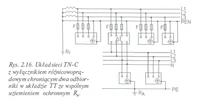Hello,
can anyone tell me how to connect the cable to the Kospel PPE2-9/12/15 water heater?
The only thing I can guess is that I should connect the green-yellow wire to the far right screw, but I have absolutely no idea what the symbols U, V, W mean and where should the blue and brown wires be?
I am attaching a photo of the heater, greetings.
can anyone tell me how to connect the cable to the Kospel PPE2-9/12/15 water heater?
The only thing I can guess is that I should connect the green-yellow wire to the far right screw, but I have absolutely no idea what the symbols U, V, W mean and where should the blue and brown wires be?
I am attaching a photo of the heater, greetings.






